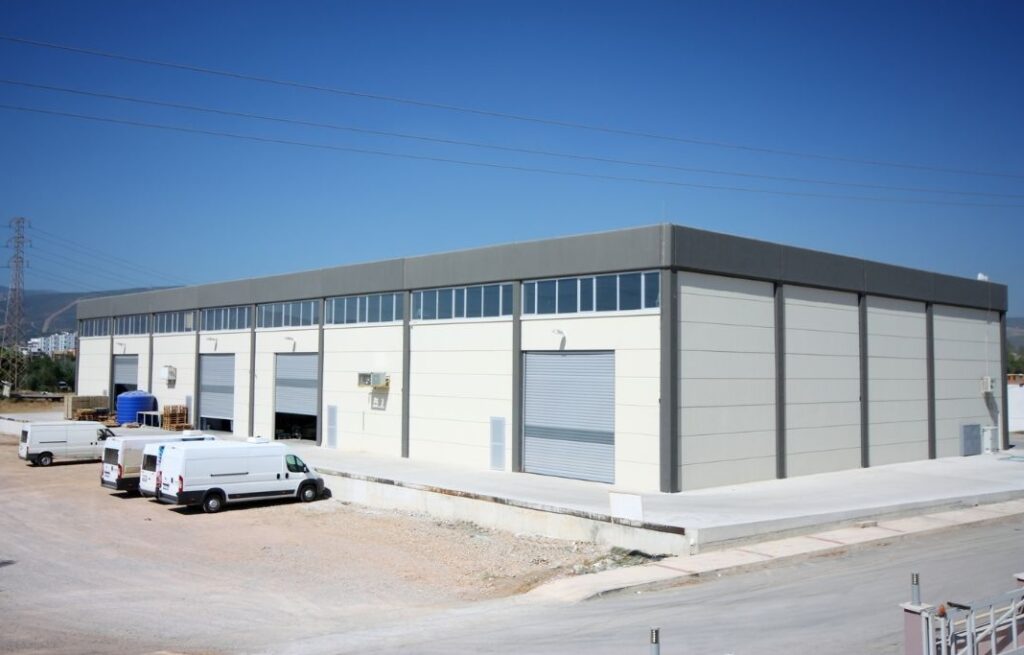Specialist Distribution Centre Flat Roofing Systems
Experts in flat roofing systems for distribution centres with over 30 years of experience.
Experts in flat roofing systems for distribution centres with over 30 years of experience.














Roofing leaks in a distribution centre can cause serious disruption. Even small drips risk damaging stock, spoiling packaging and creating slip hazards for staff. If left unresolved, leaks may harm equipment, slow down operations and encourage mould growth, leading to costly repairs.
For a facility that relies on efficiency, quick action is essential. Addressing leaks promptly protects assets, ensures safety and keeps the business running without unnecessary interruptions.

For distribution centres, green roofing offers an environmentally friendly approach that merges vegetation with protective layers. This design helps regulate indoor temperatures, captures and slows rainwater and encourages local wildlife.
Modern liquid-applied roofing systems are well suited to the demands of large distribution centres. Applied without heat, they form a continuous waterproof layer that adapts easily to intricate roof layouts.
Large distribution centres benefit from lightweight membrane systems that are built for speed and efficiency. These robust solutions resist harsh weather, require little ongoing upkeep, and can be installed rapidly across wide flat roof spans.
Book a free site survey with AAC Flat Roofing and benefit from over 30 years of experience in commercial flat roofing.
Our team will assess your distribution centre roof without obligation. Our survey helps identify potential issues early, saving time and cost while ensuring the best solution for long-term protection and performance.
When water keeps penetrating despite repeated fixes, it highlights deep-seated roof system failure, making replacement far more practical and cost-effective than ongoing repairs.
Persistent standing water across flat surfaces signals poor drainage or structural decline, accelerating membrane breakdown and increasing the risk of severe leaks or roof collapse.
Raised bubbles or blisters show trapped moisture and failing adhesion, undermining waterproofing performance and leading to leaks, material breakdown, and progressive structural deterioration.
Water-soaked or uncovered insulation reduces thermal efficiency, increases energy bills, and signals prolonged roof failure, often requiring complete system replacement for lasting performance.
Open cracks or splits expose the roof to rainwater ingress, rapid deterioration, and eventual large-scale damage that simple patch repairs cannot resolve.
When patch jobs and emergency callouts become routine, costs soon outweigh replacement. Investing in a new roof provides reliability, durability, and long-term savings.
Leaks often come from ageing materials, poor drainage, weather damage or poorly maintained joints. Even small defects can let water in, damaging stock and equipment. Regular inspections and timely maintenance are vital to identify weaknesses early and prevent costly disruptions to operations.
It is recommended that inspections are carried out twice a year, usually in spring and autumn. Additional checks should follow severe weather events. Proactive inspections help identify damage, drainage issues and wear before they become serious. This approach reduces repair costs and avoids disruption to business operations.
Flat roofs on commercial or industrial facilities usually last between 15 and 25 years depending on the system, quality of installation and ongoing care. Regular inspections, timely repairs and preventative maintenance can extend lifespan, but once wear becomes extensive, full replacement is the most cost-effective solution.
Yes, damaged or poorly insulated roofs allow heat to escape during winter and increase cooling costs in summer. Water ingress into insulation can make this worse. Addressing problems early ensures better energy efficiency, lower bills and improved conditions for staff and equipment inside the facility.
Warning signs include persistent leaks, ponding water, blistering, cracks, mould growth, rising repair bills and sagging areas. These issues indicate that the roof has reached the end of its lifespan. A new installation provides reliable waterproofing, improved insulation and a more cost-effective long-term solution.
Yes, modern roofing systems can include green roofs, reflective membranes or solar integration. These reduce energy use, manage rainwater runoff and promote biodiversity. Sustainable solutions not only cut environmental impact but also reduce operational costs, helping distribution centres align with modern environmental and corporate responsibility standards.
we’ll get back to you as soon as possible